2014 Chevrolet Traverse: Car Seat Check

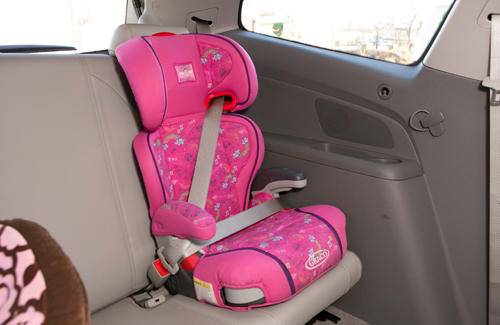
Chevrolet’s people-mover, the Traverse, received a light update for 2013, and for 2014 it got a host of available safety features. The Traverse seats seven or eight passengers on three rows of seats, and we tested a model with second-row bucket seats. The crossover should be plenty roomy for a growing family, but connecting to its Latch anchors proved a bit difficult, earning this crossover mixed grades in our Car Seat Check.
How many car seats fit in the second row? Two — one on each captain’s chair
How many car seats fit in the third row? Two
What We Like
- The second row’s two top tether anchors and the third row’s single tether were easy to connect to thanks to lots of clearance.
- In the second row, there was plenty of space for our high-back booster. It fit well on the seat and installed easily thanks to buckles on stable bases.
- In rear-facing mode, the convertible had plenty of space in the second row. The front passenger did not need to move her seat up to make room for it. Installing it was tricky, however, thanks again to tough-to-access Latch anchors.
- Getting to the third row was easy. Pulling a combination of a seat-mounted tether strap and a lever slides the seat and tumbles the seat bottom cushion forward. Although the step-in height is pretty high, the resulting opening is wide enough for an adult.
What We Don’t
- The third row lacks Latch anchors and has only one tether anchor. Because it’s in the middle of the bench seat, installing a forward-facing convertible there takes up two seating positions. The seat belt buckles in the third row are floppy, making it tough for kids to buckle up independently.
- Although the second-row Latch anchors aren’t set too deeply in the seat bight, they’re high up against the seatback’s firm cushion, complicating access.
- The front passenger had to move her seat forward about an inch to accommodate the rear-facing infant-safety seat. Also, it would be easier to use the seat belt to install this seat, thanks to the tight Latch anchors.
- In the second row, the forward-facing convertible was tough to install due to the position of the Latch anchors and the seat cushion. Also, the seat’s fixed head restraint pushed the convertible forward; reclining the seatback helped nestle it at the right angle. The third row’s fixed head restraint caused the same problem.
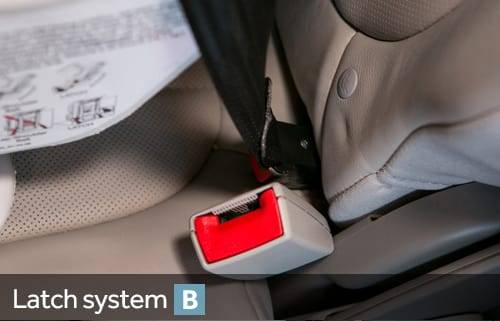
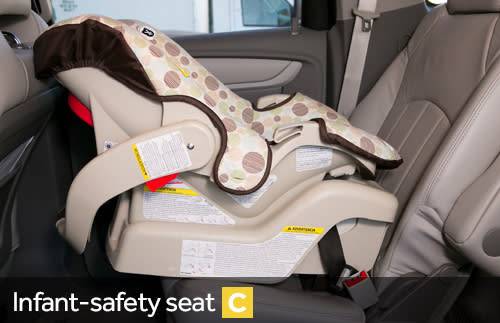
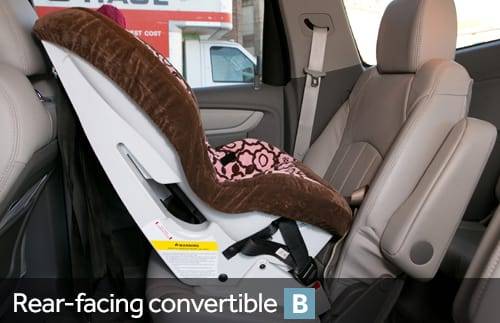
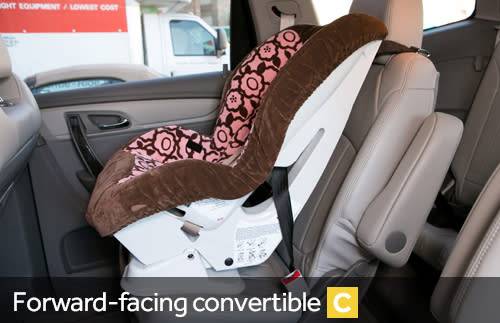

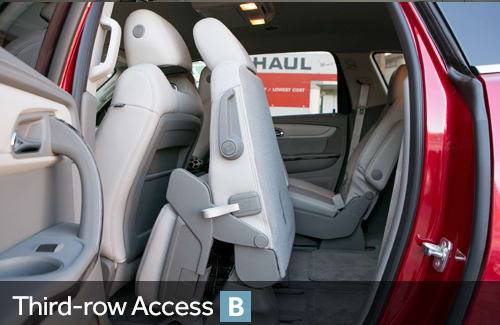
Grading Scale
A: Plenty of room for the car seat and the child; doesn’t impact driver or front- passenger legroom. Easy to find and connect to Latch and tether anchors. No fit issues involving head restraint or seat contouring. Easy access to the third row.
B: Plenty of room. One fit or connection issue. Some problems accessing third row when available.
C: Marginal room. Two fit or connection issues. Difficult to access third row when available.
D: Insufficient room. Two or more fit or connection issues.
F: Does not fit or is unsafe.
About Cars.com’s Car Seat Checks
Editors Jennifer Geiger and Jennifer Newman are certified child safety seat installation technicians.
For the Car Seat Check, we use a Graco SnugRide 30 infant-safety seat, a Britax Roundabout convertible seat and Graco TurboBooster seat. The front seats are adjusted for a 6-foot driver and a 5-foot-8 passenger. The three child seats are installed in the second row. The booster seat sits behind the driver’s seat, and the infant and convertible seats are installed behind the front passenger seat.
We also install the forward-facing convertible in the second row’s middle seat with the booster and infant seat in the outboard seats to see if three car seats will fit; a child sitting in the booster seat must be able to reach the seat belt buckle. If there’s a third row, we install the booster seat and a forward-facing convertible. To learn more about how we conduct our Car Seat Checks, go here.
Parents should also remember that they can use the Latch system or a seat belt to install a car seat, and that Latch anchors have a weight limit of 65 pounds, including the weight of the child and the weight of the seat itself.
Editor’s note: This Car Seat Check is repurposed from our test of the 2013 Chevrolet Traverse, but our results apply to the 2014 models.
Cars.com photos by Evan Sears

News Editor Jennifer Geiger joined the automotive industry in 2003, much to the delight of her Corvette-obsessed dad. Jennifer is an expert reviewer, certified car-seat technician and mom of three. She wears a lot of hats — many of them while driving a minivan.
Featured stories




